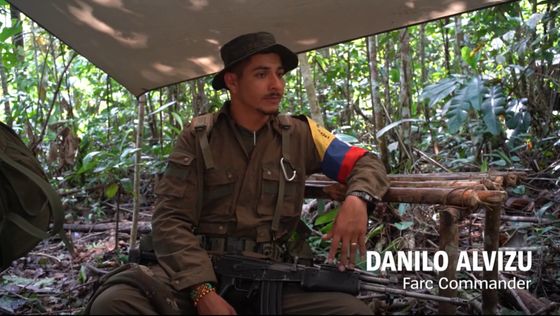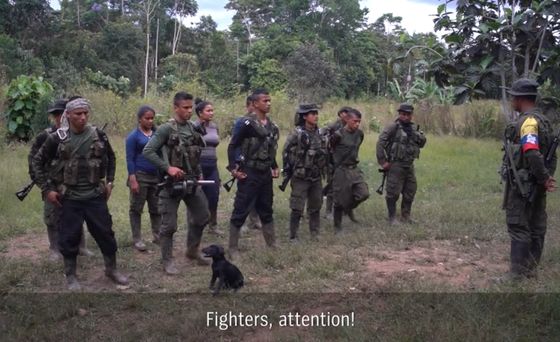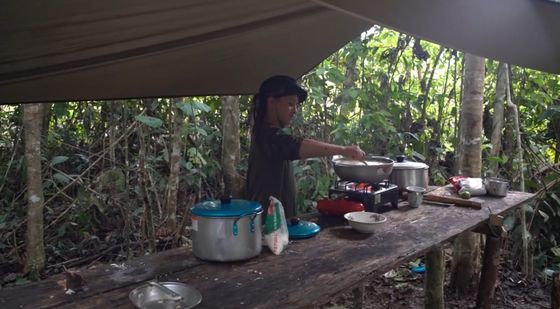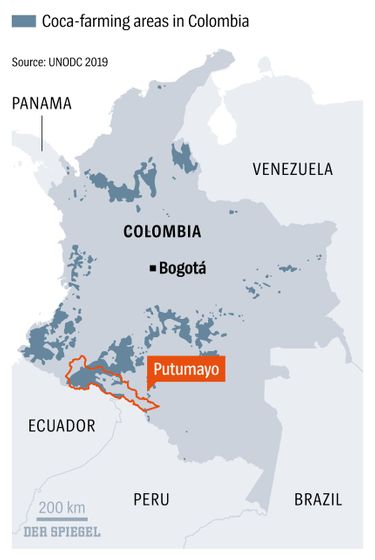Get close to the face of an antigovernment guerrilla trying to bring Colombia back to war

Ivan Marquez, former leader of the
FARC Preparing for Renewed Fighting Deep in Colombian Jungle-SPIEGEL ONLINE
https://www.spiegel.de/international/world/farc-preparing-for-renewed-fighting-deep-in-colombian-jungle-a-1286296.html
In June 2016, the Colombian Revolutionary Army (FARC) , the left-wing guerrilla of Colombia , agreed to a peace talk with the Colombian government. This ceasefire was supposed to bring peace to Colombia, which had been in a state of affair for more than half a century. However, on August 29, 2019, former FARC executive Ivan Marquez declared the resumption of the struggle, revealing his idea of working with the left-wing guerrilla National Liberation Army (ELN) who has been active since peace. With that, dark clouds are standing in Colombia, where peace should have been restored.
Former guerrillas who are unhappy with peace
FARC commander Danilo Albiz told reporter Juan Moreno, a Der Spiegel who visited FARC in the Colombian jungle, 'We are present at a historic moment.' Mr. Albiz's consent to the interview is to inform the world that FARC will be armed up again and call on Colombian farmers and drug cartels to arm and fight.
Mr. Albiz interviewed by Der Spiegel. The three-color armband worn on the left arm is from the successor group ' Fuerza Alternativa Revolucionaria del Común: FARC ', the successor of the anti-government guerrilla FARC.

Albiz, who was a member of the anti-government guerrillas before the peace negotiations, once applied for a scholarship and tried to start a new life in Cuba. After all, however, he returned to Colombia, joined the FARC party, and began working as a party photographer. And once FARC became an armed organization again, it would become the commander of that combat unit.

Mr. Albiz said the reason for returning to FARC was: “The Colombian government in response to an agreement with FARC assured the safety of former FARC members, but no agreement has been reached. 'The members were killed by gangs and killer who were hired by the government.' It was in line with Marquez, who declared the resumption of the armed struggle because the government did not comply with the peace agreement.
◆ Enlisted for love reasons
The reason why the 13-year-old Alejandra who was participating in FARC as a soldier joined FARC was love.

Alejandra had no father and lived in a rural area with nine brothers and a mother with uterine cancer. However, all of the mother's relatives, including the six uncles who were shot dead by the
In addition to Alejandra, there are many girls in the FARC camp in the jungle. Alejandra, who is spending time watching soldiers' battle training and helping organize the organization, commented Moreno ’s interview, “Sometimes it's scary, but the FARC comrades are brave. I will tell you. '

◆ FARC receiving support from drug cartels and some farmers
Although FARC is allowed to form legitimate political parties as a condition for the ceasefire with the Colombian government, the FARC vote rate in the election is less than 1%, and most Colombian citizens support FARC. Is not ... Nonetheless, FARC's momentum is linked to drug cartels and Colombian mafia.
FARC controls the trading of cocaine paste, which is the raw material for cocaine, and only the smugglers who work with FARC can obtain cocaine paste in Colombia. These narcotics transactions are not only a source of funds for FARC, but also a driving force for the support of farmers who grow the raw coca.
Coca's production bases are scattered throughout Colombia, including Putumayo, where FARC has established bases.

In Putumayo Province, while the Colombian authorities controlled coca cultivation, measures were taken to reduce drug production, such as subsidies for farmers who stopped coca cultivation. However, FARC, who claims farmers' asylums, is much more reliable than the government for farmers who live in rural areas where corruption and crime are rampant.
During the interview with Der Spiegel, a farmer who sold 7 kg of cocaine paste to FARC said, “Guerilla is glad to come back. You can put farm tools in front of me. '

FARC has switched its strategy to terrorism in urban areas
The number and economic power of FARC is by no means abundant, and even underwear to supply women soldiers as well as weapons and ammunition is lacking. According to Albiz, the number of armed guerrillas participating in FARC is 500 in Putumayo alone, and about 2000 in Colombia. Also, it is said that there are about 3000 members of ELN who have already announced that they will fight with FARC, and a total of about 5000 armed guerrillas will become the FARC side's strength. The Colombian government army is supported by the United States and is equipped with the latest weapons and communication systems.
However, Mr. Albiz said, “Some army militants have a vested interest in the new war. We were able to grow our power thanks to their support during the ceasefire. “The Colombian army is not a monolith, so he indicated that FARC had a good chance of winning.
In addition, Albiz said, “40% of soldiers are hiding in urban areas and operate without even knowing each other's faces,” and the FARC strategy has shifted from guerrilla activities in the jungle to terrorist activities in urban areas. It was revealed that
Related Posts:
in Note, Posted by log1l_ks







